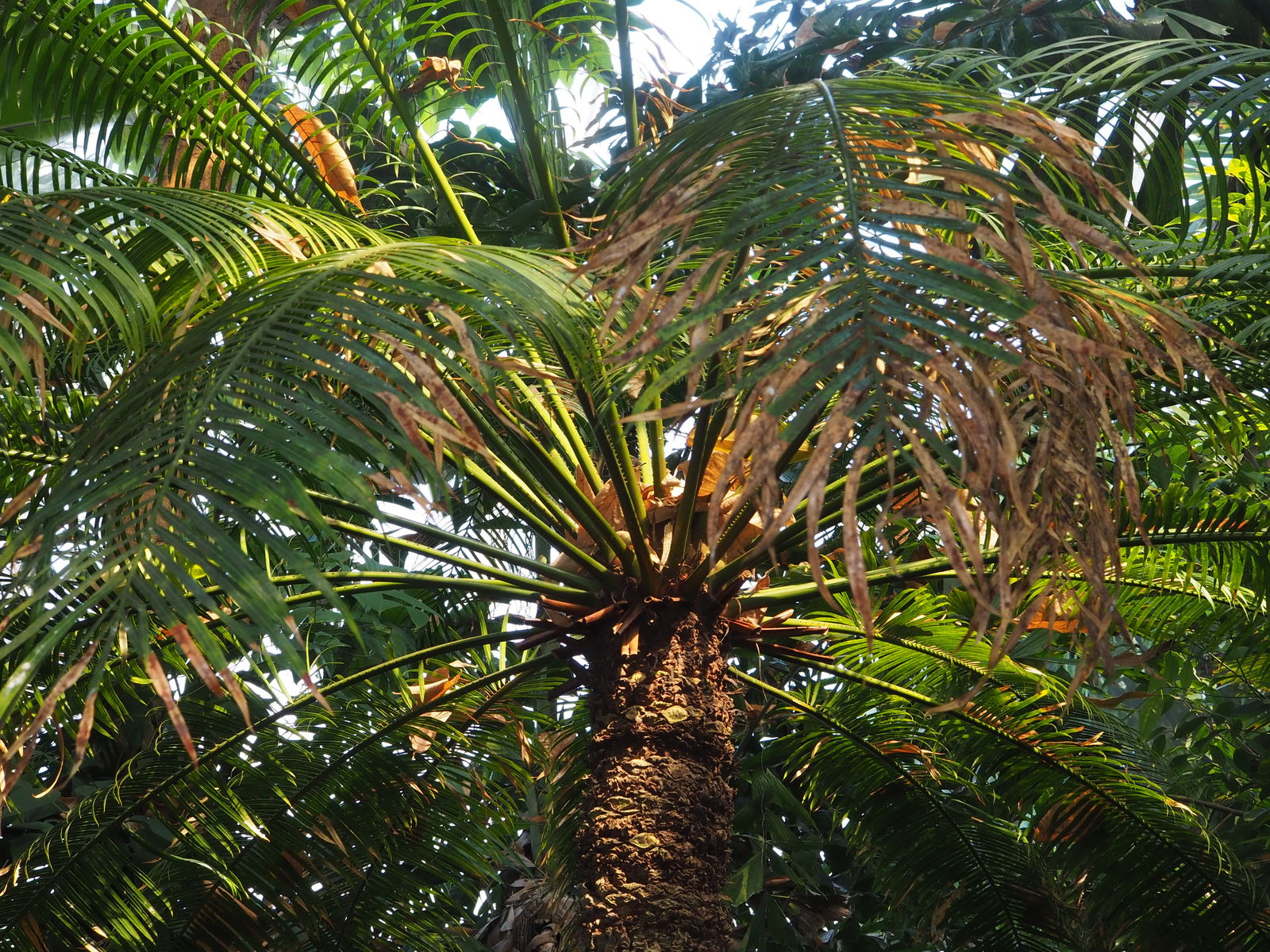Cycas circinalis L.
Cycas circinalis is a medium sized suckering cycad, growing 3 - 5 metres tall, exceptionally to 10 metres. A rather palm-like appearance, it produces one or more, usually unbranched stems around 27 - 43cm in diameter, topped with a crown of large, bright green, glossy leaves 150 - 250cm long. Usually evergreen, the plant can lose its leaves in extremely dry seasons. The plant is harvested from the wild for local use as a food, medicine and source of materials, and is sometimes sold in local markets. The pith in the stem is often harvested from the wild and occasionally from cultivated plants. It is used as a food source in its native range, though recent research has shown that this is a potentially dangerous practice since the pith can cause chronic nervous disorders if it is not treated properly. Overall its use is not to be recommended, especially since it is becoming rare in the wild. The plant is also grown as an ornamental.
- Family: Cycadaceae
- Habit: Evergreen palm-like tree
- Habitat: Fairly dense, seasonally dry, scrubby woodlands in hilly areas
- Status : Common
Vernacular names
English - Sago Palm
Malayalam - Eentha panna
Hindi - Jangli madan must ka phul
Kannada - Mund isalu, Goddu eechalu
Marathi - Malabari supari
Sanskrit - Hintalah
Tamil - Madana kama raja, Salaparai, Eentha panai
Telugu - Rana guvva, Per ita, Madana Kamakshi
Medicinal Uses
- The pollen is narcotic.
- The male cone scales are commonly sold for use as an anodyne in bazaars in India.
- The bark and the seeds are ground to a paste with oil and used as a poultice on sores, cuts, wounds, ulcers and swellings.
- The mucilaginous terminal buds, crushed in rice water or in water holding in suspension fine particles of clay, is used in the dressing of ulcerated wounds, swollen glands, and boils.
- The juice of tender leaves is useful in the treatment of flatulence and vomiting.
- A decoction of the leaves is drunk to soothe cough.
- A gum obtained from the plant has been used medicinally, particularly as an agent that is said to produce rapid suppuration when applied to malignant ulcers. The gum also has the repute of being a good antidote for snake and insect bites.
